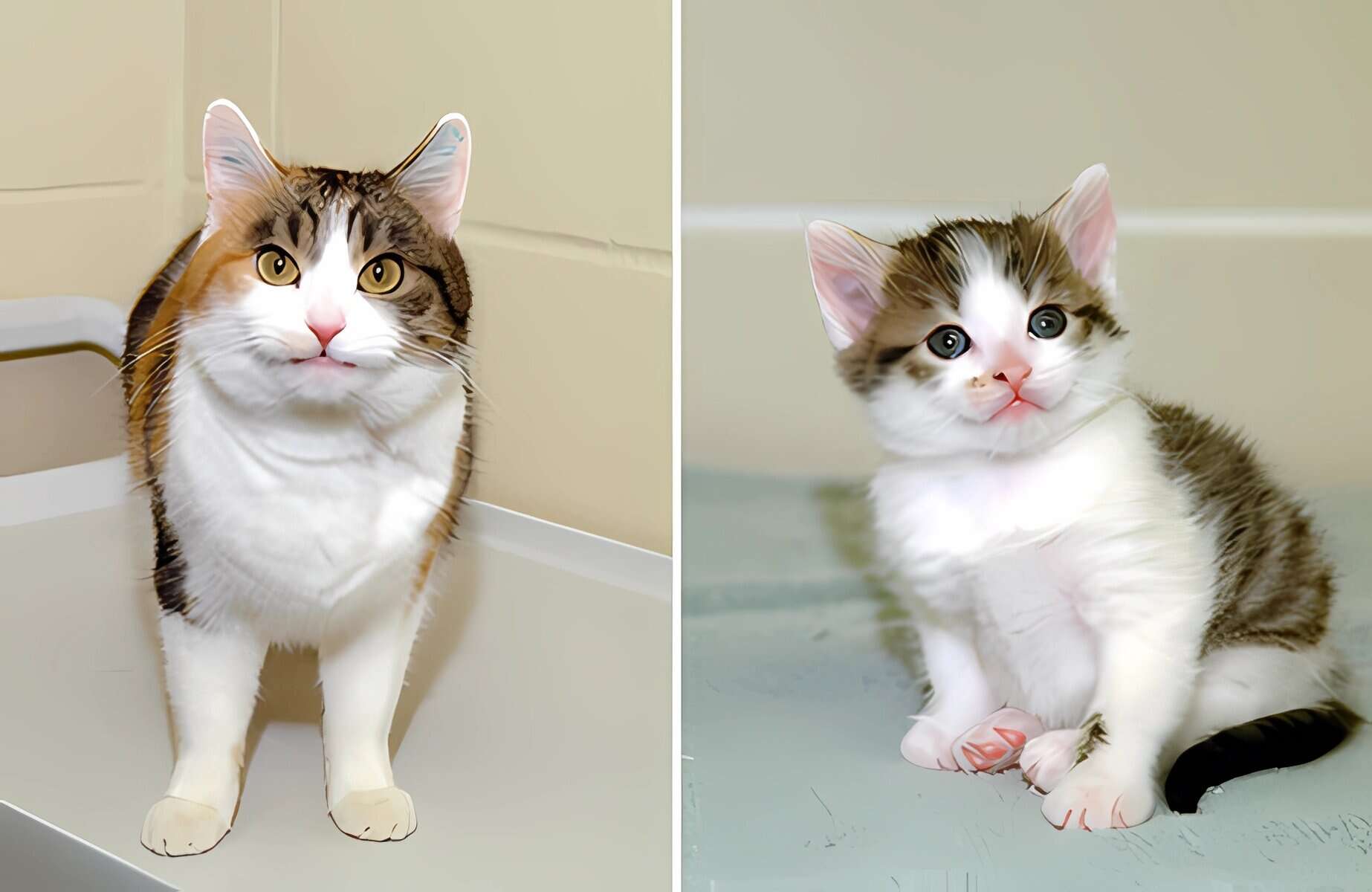🐾 Scientists Cloned a Cat... and Got a Completely Different Cat

Her name was Rainbow. She was a gorgeous calico cat—bold patches of orange, black, and white, walking around like living artwork.
One day, scientists decided to clone her. (Yes, clone. Like, sci-fi movie clone.)
Here’s how they did it:
They took a single cell from Rainbow, removed its nucleus (the part with all the DNA), and popped it into an egg cell.
Then they zapped it with electricity to kick-start the whole process, implanted the embryo into a surrogate mother cat, and waited.
Five months later…
Meet Cc—short for CopyCat. Born in 2001. Cute as a button. First-ever cloned cat in the world. Historic stuff.
The scientists were expecting Rainbow 2.0. A perfect calico copy.
But here’s the twist… Cc looked nothing like Rainbow. Not even close.
Rainbow = calico drama queen. Cc = soft gray tabby with white fur. Zero orange. Zero patchwork. Zero “copy.”
Wait, what?
The scientists were genuinely confused.
Did something go wrong? Did the cloning fail?
Nope. The DNA was identical. The genes matched perfectly.
But what they didn’t fully predict was the magic of something called X-chromosome inactivation.
(Stay with me—it’s actually cool.)
In female cats, two X chromosomes decide which color genes get expressed.
But which X gets “turned on” is totally random—like flipping a coin in each cell.
That randomness gives calicos their unique patchy coats.
When Cc was cloned, that X-shuffling process did its own thing all over again—and the result? A completely different look.
Same genes. Different expression. Total plot twist.
But it wasn’t just about looks.
Cc had her own personality too.
Where Rainbow was commanding and dramatic, Cc was curious and playful.
Same DNA, but she moved through the world in her own quiet way.
Cc basically looked science in the face and said:
“You can copy my code, but you’ll never copy my vibe.”
After her time in the lab, Cc was adopted by Dr. Duane Kraemer, one of the lead scientists in the cloning project, and his wife, Shirley. They gave her a real home—not a laboratory, but a place where she could nap in sunbeams, chase toys, and be loved for exactly who she was.
She lived a full life, had kittens of her own (naturally!), and passed away at 18 years old—loved, healthy, and quietly legendary.
This little gray tabby taught scientists something huge: cloning isn’t photocopying.
You can replicate the blueprint, but life will always add its own unique touches.
It’s the same reason identical human twins aren’t actually identical—different fingerprints, different personalities, different paths.
🐱 What did we learn?
You can clone a cat…
But you can’t clone personality, soul, or style.
Cc may have been a copy on paper—but in real life?
She was one of a kind.
Just like every living being should be.
“Tag a friend who loves cats!” or “Share if this blew your mind too!”
